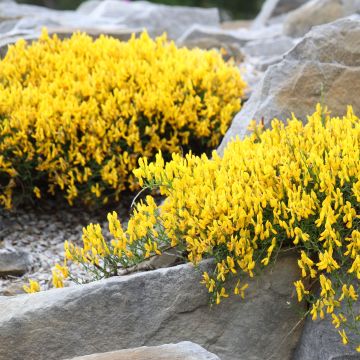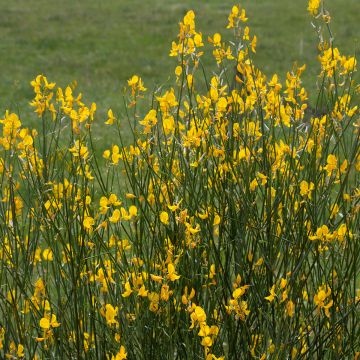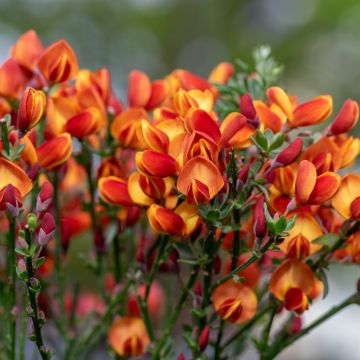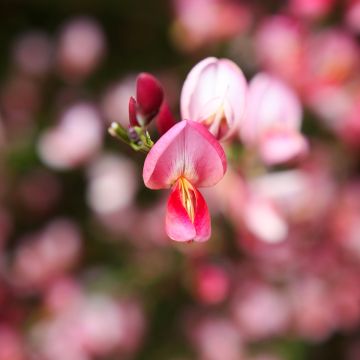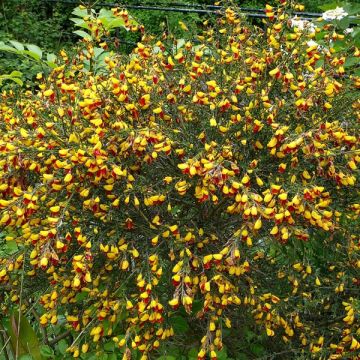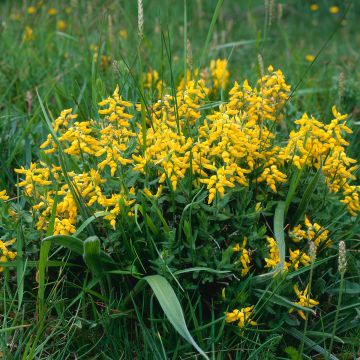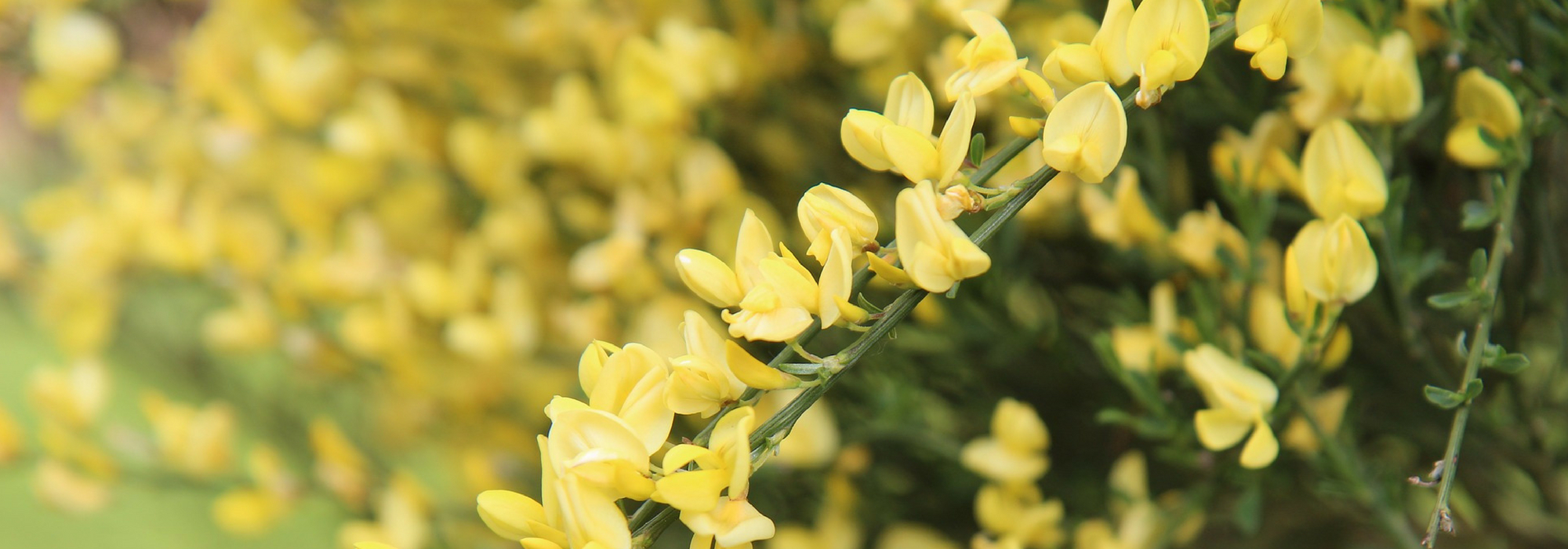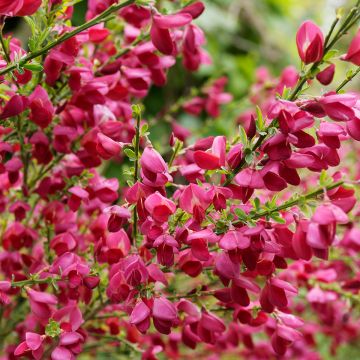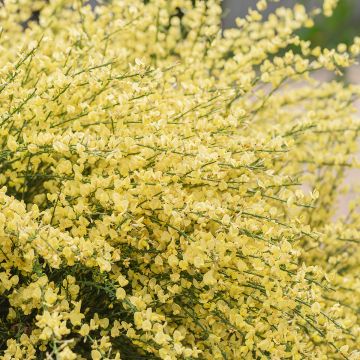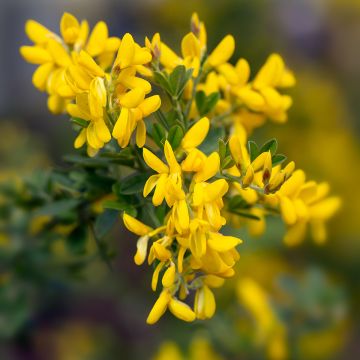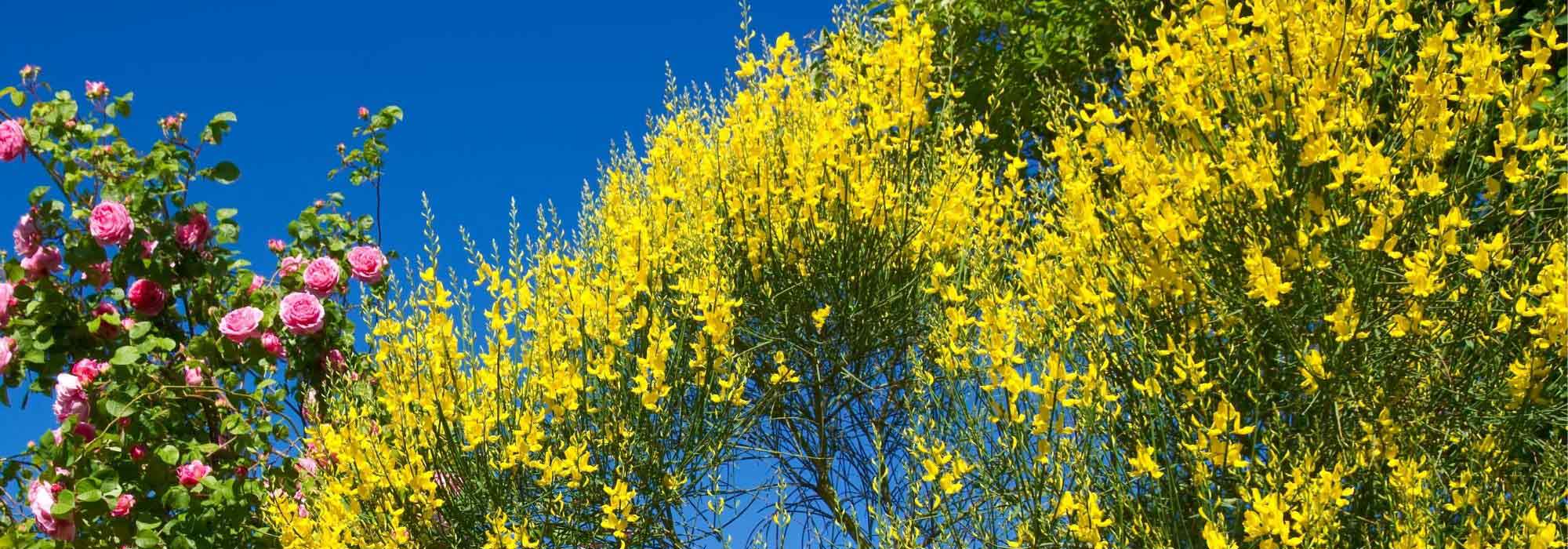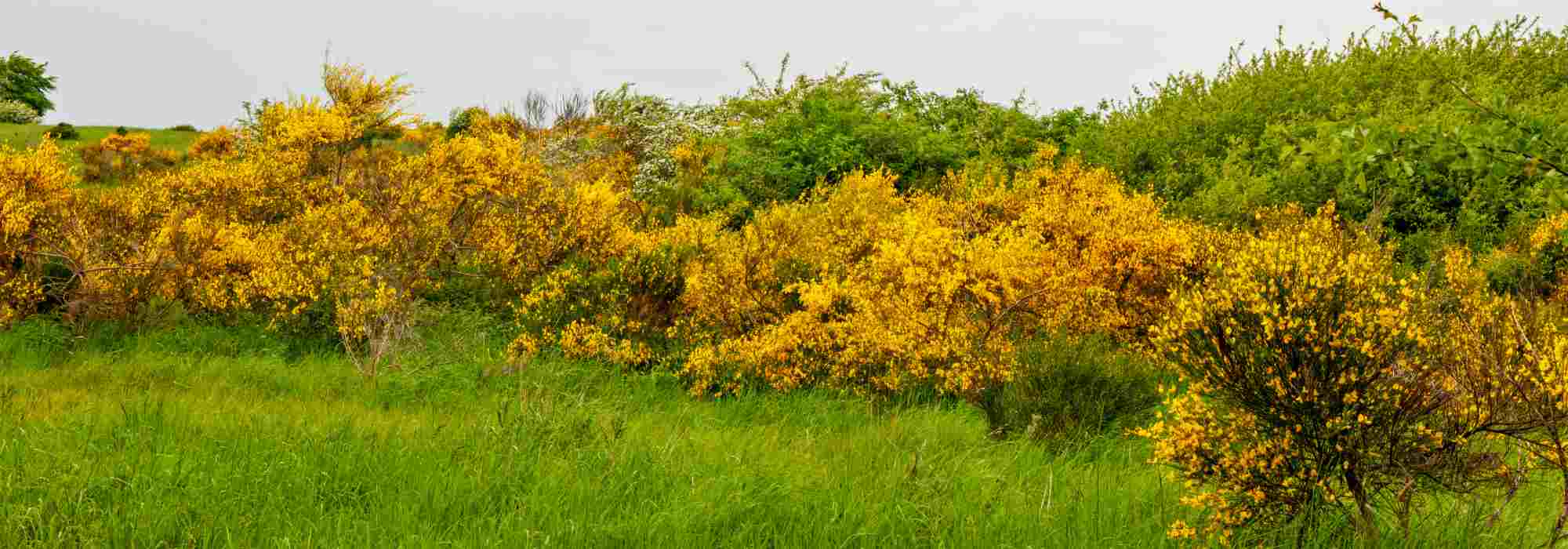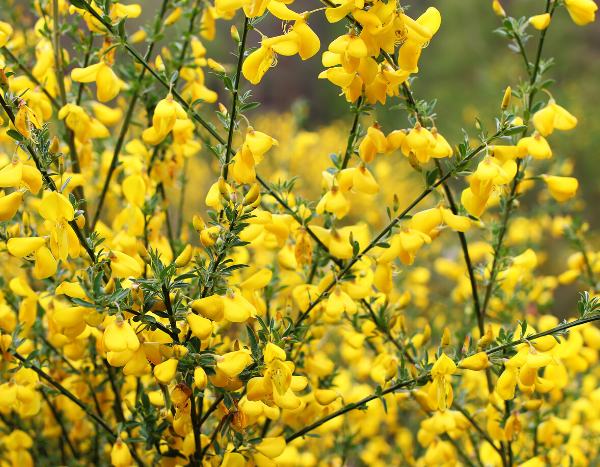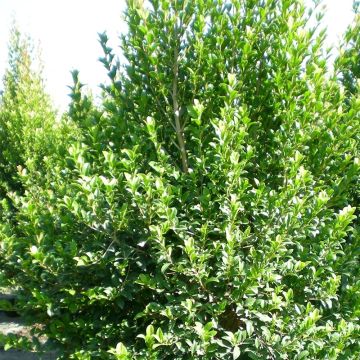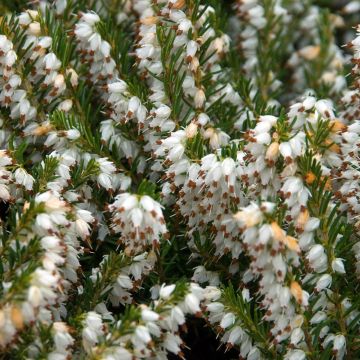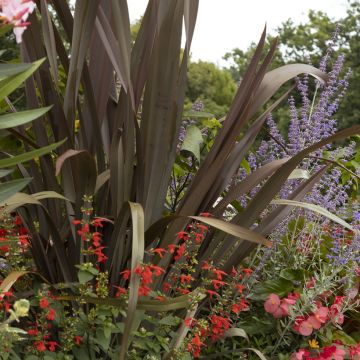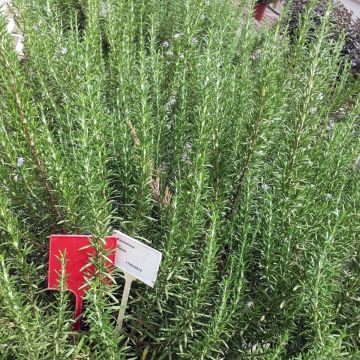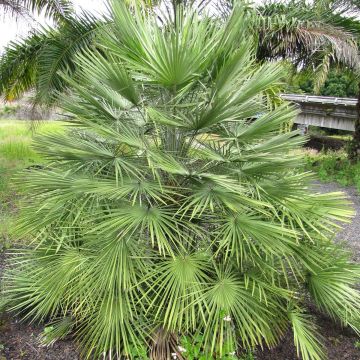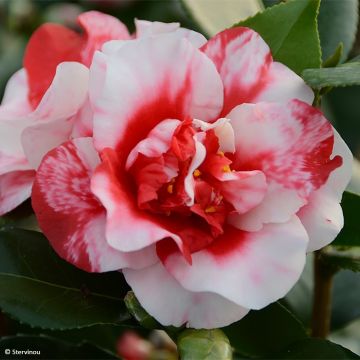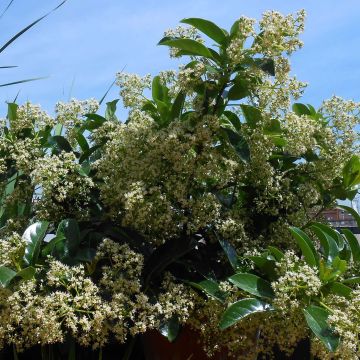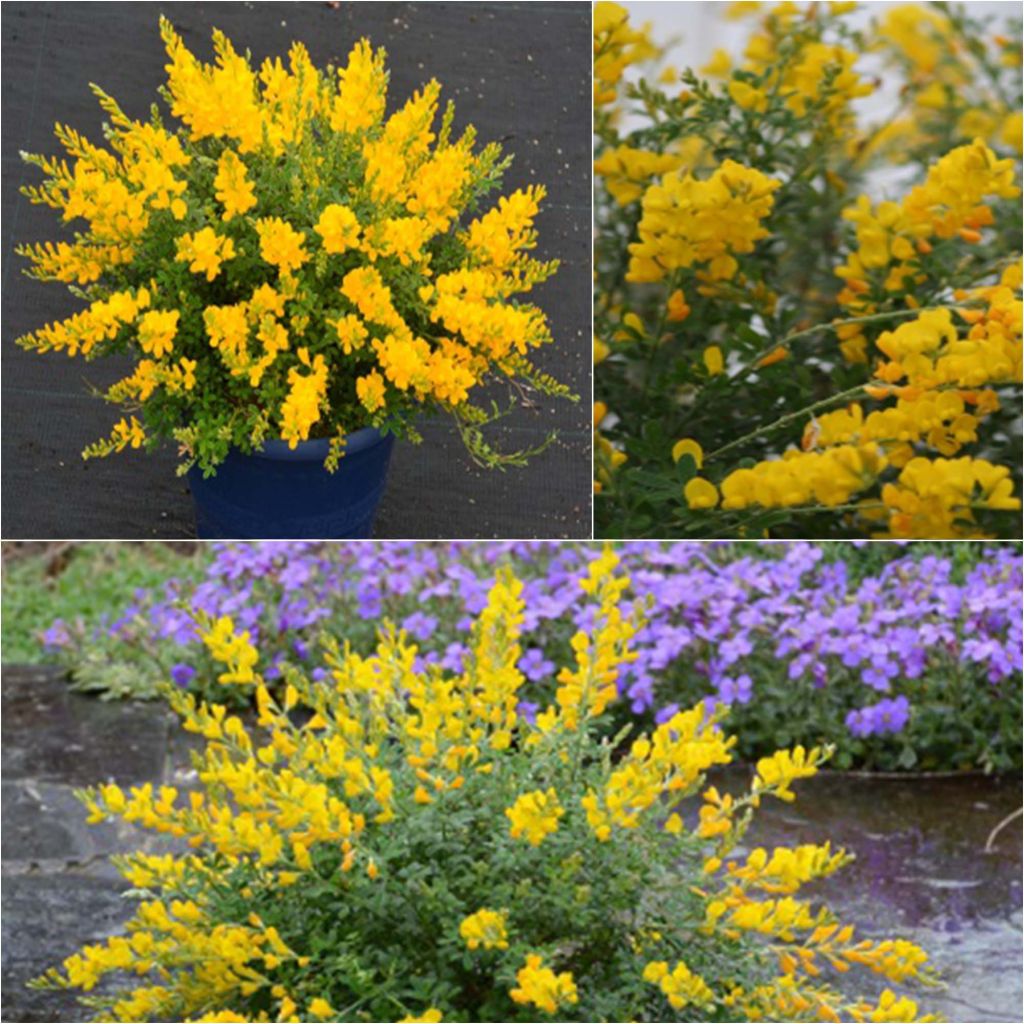

Cytisus racemosus Phebus
Cytisus racemosus Phebus
Cytisus x spachiana Phebus® 'GENI138'
Broom
It has bloomed and grown well, for now it is in a pot, but I will need to find a more permanent spot for it.
laurence, 23/09/2024
Special offer!
Receive a €20 voucher for any order over €90 (excluding delivery costs, credit notes, and plastic-free options)!
1- Add your favorite plants to your cart.
2- Once you have reached €90, confirm your order (you can even choose the delivery date!).
3- As soon as your order is shipped, you will receive an email containing your voucher code, valid for 3 months (90 days).
Your voucher is unique and can only be used once, for any order with a minimum value of €20, excluding delivery costs.
Can be combined with other current offers, non-divisible and non-refundable.
Why not try an alternative variety in stock?
View all →This plant carries a 24 months recovery warranty
More information
We guarantee the quality of our plants for a full growing cycle, and will replace at our expense any plant that fails to recover under normal climatic and planting conditions.

Would this plant suit my garden?
Set up your Plantfit profile →
Description
Cytisus racemosus Phebus ('GENI138'), also known as Genista x spachiana 'GENI138' PHEBUS, is a variety of broom from Tenerife recently selected by the INRA for its naturally regular, more compact and more branched habit than the species, not requiring pruning. Its vegetation almost disappears in March-April under an abundance of highly fragrant flowers, which are a beautiful golden yellow with a hint of orange. It is an evergreen bush that is certainly sensitive to cold, but generous and undemanding. All these qualities make it a very beautiful variety for small gardens in mild climates, including seaside gardens. Elsewhere, grow it in a large pot on a terrace or balcony and protect from severe cold in winter.
Cytisus racemosa or Genista x spachiana (synonym: Cytisus racemosus), sometimes called florist's broom, belongs to the large Fabaceae family. It is a spontaneous hybrid resulting from the cross-breeding of the broom species Genista canariensis and G. stenopetala, both native to the Canary Islands. These Mediterranean shrubs are not very hardy but well adapted to light, sandy and dry soils in summer, slightly acidic, neutral or slightly calcareous, as well as to winds carrying sea spray. Genista racemosa is commonly cultivated in flowering pots by florists.
This cultivar was obtained in France in 2007 by the INRA of Angers in collaboration with Eurogeni, and introduced to the horticultural market in 2015. Like all brooms and cytisus, it is a fast-growing shrub with a short lifespan. Its foliage persists throughout the year in mild climates.
This Phebus broom, averaging 1.1 m (3.6 ft) in height and 1.2 m (3.9 ft) in spread, naturally develops a rounded, regular, dense bushy habit, but with a light appearance, due to its slender stems. The flexible and branched stems are green in colour, and bear dark green slightly greyish, slightly silvery leaves, measuring 1.5 cm to 2.5 cm (0.6 in to 1 in) long and divided into 3 small leaflets. Pea-like flowers appear in April-May, depending on the climate, and last for several weeks until June. The flowers measure 1 cm (0.4 in) long, and are arranged at the top of the stems in clusters 15 cm (5.9 in) long. They are numerous and have a very warm yellow colour, lightly tinged with orange. Their pronounced fragrance attracts pollinating insects and perfumes a whole area of the garden or terrace. The lifespan of this plant is quite short, about 5 to 8 years. All parts of it are toxic if ingested.
The Phebus broom deserves to be seen and smelled in spring. Place it in a large pot on a terrace to enjoy its heady fragrance. It also suits dry or coastal gardens protected from severe frost. For example, place it at the corner of the house, on a well-drained slope, or in a large shrub bed serving as a focal point in the centre of a small garden. It can be grown alongside many shrubs with staggered foliage or flowering: dwarf conifers (Juniperus horizontalis, Abies balsamea 'Nana', white spruce), an evergreen wallflower 'Bowles Mauve', blue or mauve aubrietas, rosemary, or a creeping ceanothus whose blue flowering complements the broom's yellow flowers. Evergreen artemisias, blue or white evergreen salvias and perennial geraniums compose beautiful maintenance-free flowering scenes in a wild garden.
Cytisus racemosus Phebus in pictures
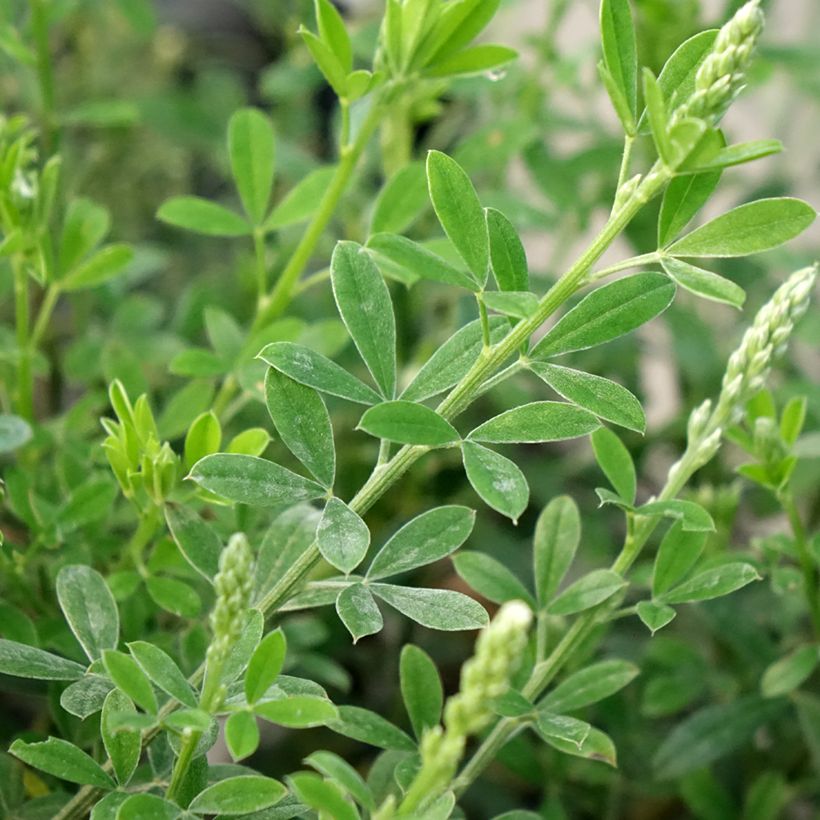

Plant habit
Flowering
Foliage
Botanical data
Cytisus
x spachiana
Phebus® 'GENI138'
Fabaceae
Broom
Cultivar or hybrid
Other Broom - Cytisus
View all →Planting and care
It grows well in open ground in mild climates, or in a pot to be stored away from heavy frost elsewhere. Plant in spring, so that it has time to establish itself before winter. Once well established, it can withstand short frosts of around -7° C (19.4° F) in well-drained soil and a sheltered position. In open ground, it is advisable to protect it with a winter fleece during the first two winters or in case of severe frost. It enjoys very sunny exposures. It prefers well-drained soil, preferably without excess limestone, and neutral or acidic. It tolerates dry summers very well once well established, even in hot regions. Its tolerance to sea spray is also very good. Choose its location carefully as it does not like to be moved. Not demanding, it will be satisfied with light pruning after flowering to avoid fruiting which quickly exhausts the plant. This also helps to maintain a compact and balanced habit. Planted in poor soil, the plant has less tendency to become bare at the base. Its lifespan is rather short, around 5 to 8 years.
Pot cultivation: Choose a container with a pierced bottom, and fill with a layer of clay pebbles or fragments of terracotta to ensure perfect drainage. Prepare a mixture of leaf compost, garden soil, and coarse sand in equal parts. Regularly water your broom, but spaced out to avoid permanent moisture at the root level. Provide it with flowering shrub fertiliser, but not in excess to avoid promoting foliage growth at the expense of flowering. If your pot is placed on a saucer, make sure that water does not stagnate by emptying it if necessary. Repot once a year, at the end of winter.
Planting period
Intended location
Care
Planting & care advice
-
, onOrder confirmed
Reply from on Promesse de fleurs
Similar products
Haven't found what you were looking for?
Hardiness is the lowest winter temperature a plant can endure without suffering serious damage or even dying. However, hardiness is affected by location (a sheltered area, such as a patio), protection (winter cover) and soil type (hardiness is improved by well-drained soil).

Photo Sharing Terms & Conditions
In order to encourage gardeners to interact and share their experiences, Promesse de fleurs offers various media enabling content to be uploaded onto its Site - in particular via the ‘Photo sharing’ module.
The User agrees to refrain from:
- Posting any content that is illegal, prejudicial, insulting, racist, inciteful to hatred, revisionist, contrary to public decency, that infringes on privacy or on the privacy rights of third parties, in particular the publicity rights of persons and goods, intellectual property rights, or the right to privacy.
- Submitting content on behalf of a third party;
- Impersonate the identity of a third party and/or publish any personal information about a third party;
In general, the User undertakes to refrain from any unethical behaviour.
All Content (in particular text, comments, files, images, photos, videos, creative works, etc.), which may be subject to property or intellectual property rights, image or other private rights, shall remain the property of the User, subject to the limited rights granted by the terms of the licence granted by Promesse de fleurs as stated below. Users are at liberty to publish or not to publish such Content on the Site, notably via the ‘Photo Sharing’ facility, and accept that this Content shall be made public and freely accessible, notably on the Internet.
Users further acknowledge, undertake to have ,and guarantee that they hold all necessary rights and permissions to publish such material on the Site, in particular with regard to the legislation in force pertaining to any privacy, property, intellectual property, image, or contractual rights, or rights of any other nature. By publishing such Content on the Site, Users acknowledge accepting full liability as publishers of the Content within the meaning of the law, and grant Promesse de fleurs, free of charge, an inclusive, worldwide licence for the said Content for the entire duration of its publication, including all reproduction, representation, up/downloading, displaying, performing, transmission, and storage rights.
Users also grant permission for their name to be linked to the Content and accept that this link may not always be made available.
By engaging in posting material, Users consent to their Content becoming automatically accessible on the Internet, in particular on other sites and/or blogs and/or web pages of the Promesse de fleurs site, including in particular social pages and the Promesse de fleurs catalogue.
Users may secure the removal of entrusted content free of charge by issuing a simple request via our contact form.
The flowering period indicated on our website applies to countries and regions located in USDA zone 8 (France, the United Kingdom, Ireland, the Netherlands, etc.)
It will vary according to where you live:
- In zones 9 to 10 (Italy, Spain, Greece, etc.), flowering will occur about 2 to 4 weeks earlier.
- In zones 6 to 7 (Germany, Poland, Slovenia, and lower mountainous regions), flowering will be delayed by 2 to 3 weeks.
- In zone 5 (Central Europe, Scandinavia), blooming will be delayed by 3 to 5 weeks.
In temperate climates, pruning of spring-flowering shrubs (forsythia, spireas, etc.) should be done just after flowering.
Pruning of summer-flowering shrubs (Indian Lilac, Perovskia, etc.) can be done in winter or spring.
In cold regions as well as with frost-sensitive plants, avoid pruning too early when severe frosts may still occur.
The planting period indicated on our website applies to countries and regions located in USDA zone 8 (France, United Kingdom, Ireland, Netherlands).
It will vary according to where you live:
- In Mediterranean zones (Marseille, Madrid, Milan, etc.), autumn and winter are the best planting periods.
- In continental zones (Strasbourg, Munich, Vienna, etc.), delay planting by 2 to 3 weeks in spring and bring it forward by 2 to 4 weeks in autumn.
- In mountainous regions (the Alps, Pyrenees, Carpathians, etc.), it is best to plant in late spring (May-June) or late summer (August-September).
The harvesting period indicated on our website applies to countries and regions in USDA zone 8 (France, England, Ireland, the Netherlands).
In colder areas (Scandinavia, Poland, Austria...) fruit and vegetable harvests are likely to be delayed by 3-4 weeks.
In warmer areas (Italy, Spain, Greece, etc.), harvesting will probably take place earlier, depending on weather conditions.
The sowing periods indicated on our website apply to countries and regions within USDA Zone 8 (France, UK, Ireland, Netherlands).
In colder areas (Scandinavia, Poland, Austria...), delay any outdoor sowing by 3-4 weeks, or sow under glass.
In warmer climes (Italy, Spain, Greece, etc.), bring outdoor sowing forward by a few weeks.






























